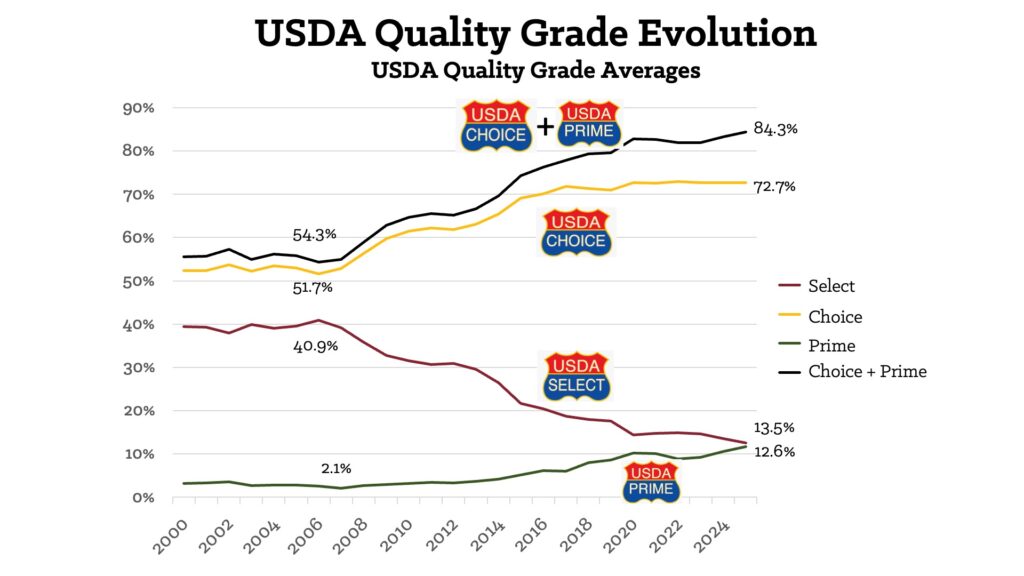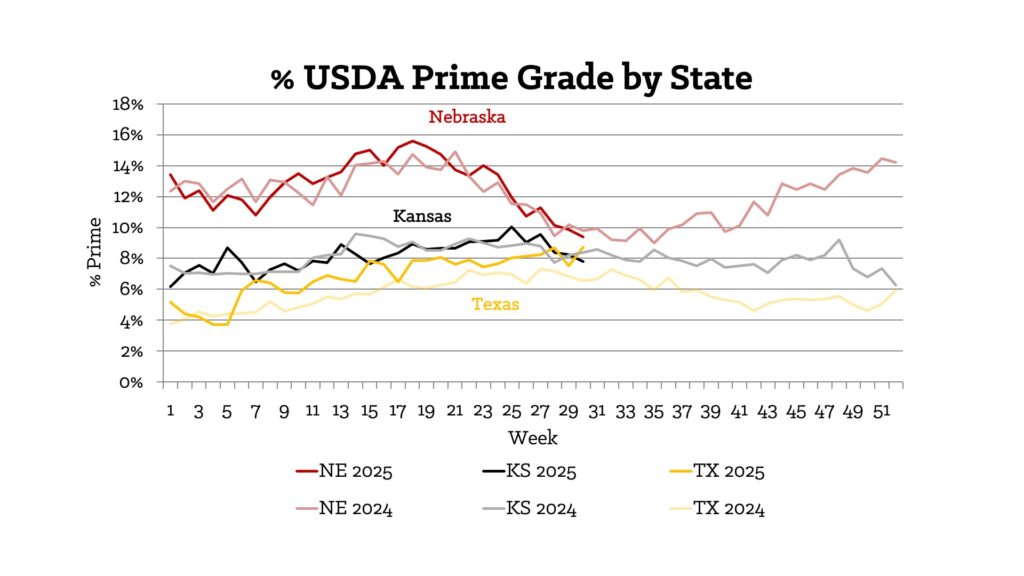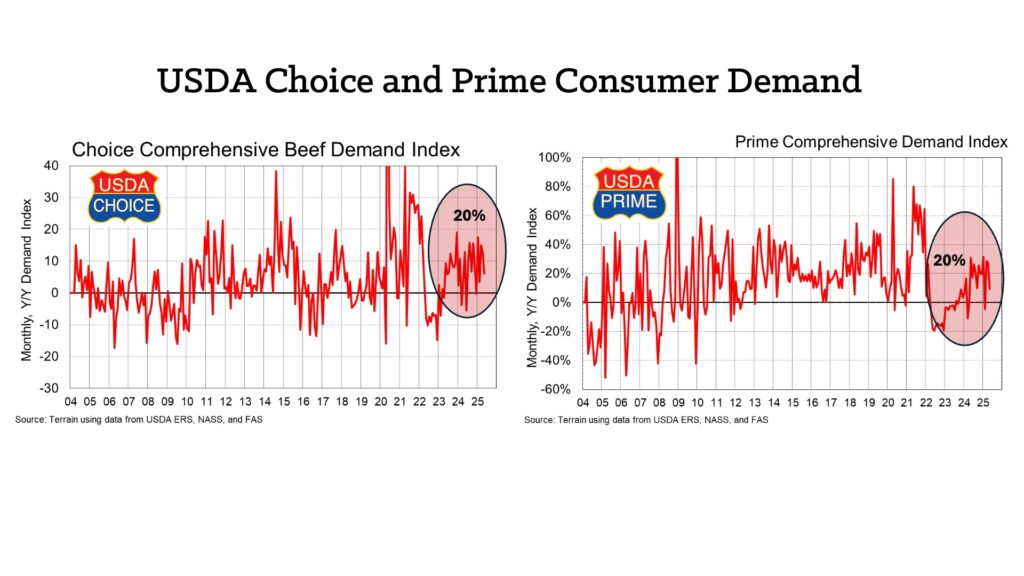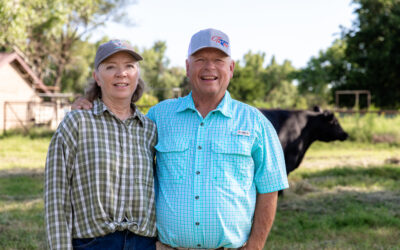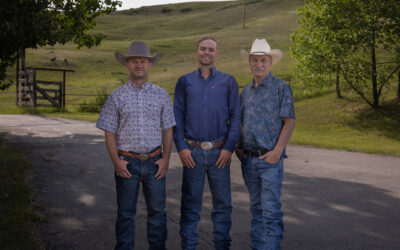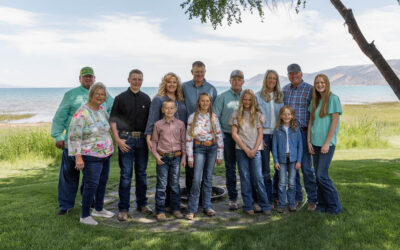
Data-Driven Progress and Partnerships
Industry leaders identify winning premium-capturing strategies at Feeding Quality Forum.
by Kylee Sellnow
September 9, 2025
Carcass quality, consumer demand and the power of producer-packer partnerships—an opportunity for Prime success in today’s cattle feeding market.
Certified Angus Beef’s (CAB) Paul Dykstra was joined by Dallas Knobloch, 4K Cattle LLC, and Travis Thomas, Upper Iowa Beef, for a panel discussion at the 2025 Feeding Quality Forum in Rochester, Minn. in August.
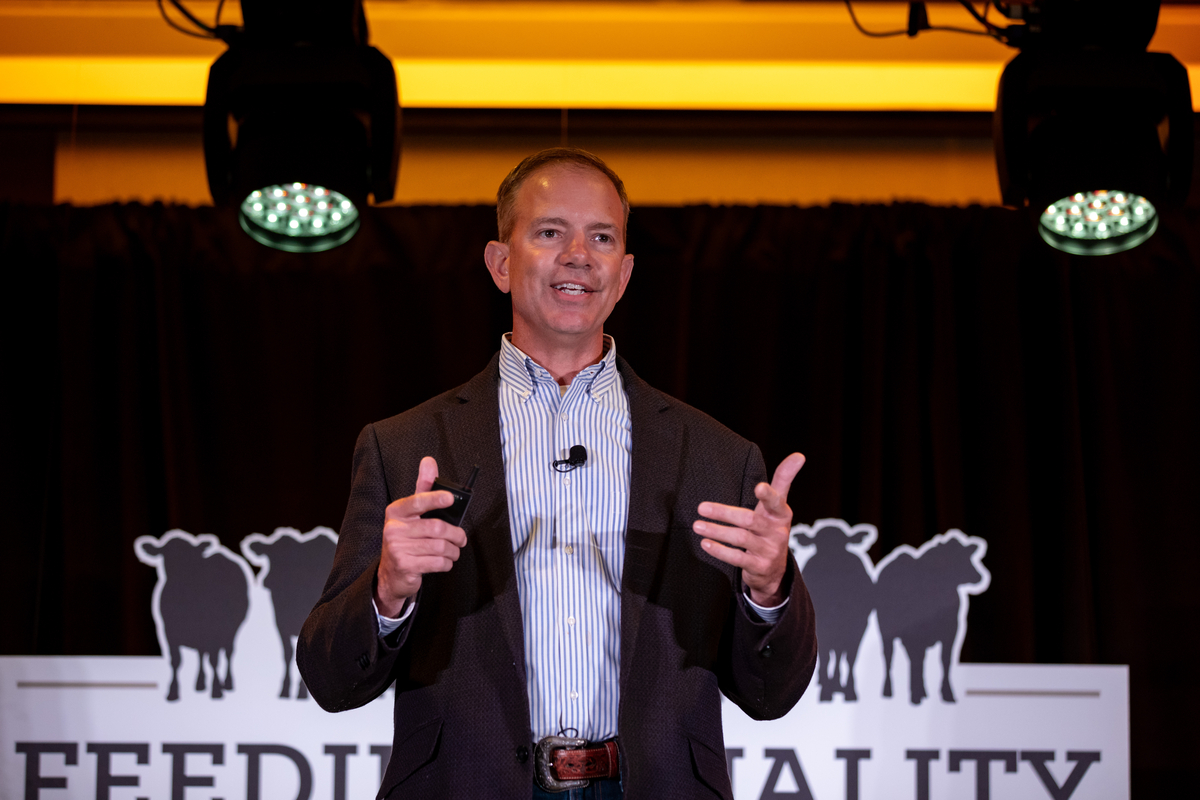
Caption: Paul Dykstra walks through market insights, highlighting the position producers are in to capture Prime premiums.
USDA Prime accounts for 12.6% of carcasses today, with combined USDA Choice and Prime reaching 84%. While higher quality cattle flood the market, the Select supply continues to drop.
As Prime rates rise, so do yield grade 4s and 5s, prompting discussions on balancing quality with efficiency.
“Carcass weight has gone up significantly this year, yet data shows us that it is not required for a Prime carcass to be heavier,” Dykstra said. “In 2024, Prime carcasses only weighed two pounds heavier on average versus their premium Choice counterparts.” (CAB Consist Study)
The same study shows backfat measurements are up, with Prime averaging 0.71 inches and premium Choice, 0.64 inches in 2024.
Quality grid premiums reached higher in the last year, too. Late 2024, USDA Prime premium averages reached $289.54 per head, CAB averaged $135.24, and Choice followed at $90.80.
Northern states like Nebraska, Iowa and Minnesota lead in Prime carcass percentages in 2025 with Texas carcasses showing notable year-over-year improvement. Quality premiums are reflected regionally, with Iowa/Minnesota sharing $7.31 and Nebraska $6.75, respectively, August 2024 to August 2025, according to USDA data.
Market Reward
Industry-wide progress starts at the ranch and relies heavily on the balance of management and genetics. It helps when there are market targets that reward everyone.
“Certified Angus Beef has helped us add value and gotten us this far,” Knobloch said. “But it takes discipline to stay true to making a product the consumer wants and not just keep feeding that steer.”
While cattlemen continue to see the reward for their commitment to quality, consumers are demanding more. Despite inflation, consumers continue to prioritize taste and freshness over price, reinforcing the value of high-quality beef.
“The consumer is voting for quality with their dollar,” Dykstra noted. USDA and Terrain data show Prime beef demand remains strong amidst historically high prices at retail.
The index shows USDA Prime demand has risen 20 percent year-over-year, while Choice demand stays just under the same threshold.
The data-driven approach to carcass grading and marketing is helping producers reduce variability and capture more premiums. Thomas emphasized transparency and feedback loops with cattle producers as essential tools for improving quality.
“I can’t ask you to make the cattle better if I don’t give you the information on the backside to help you do that,” Thomas said.
Knobloch echoed the value of feedback, highlighting the role of disciplined feeding and genetic selection in achieving high Prime rates without excessive backfat.
“It’s not just about price. It’s about getting everything else right first, at least the variables we can control,” said Knobloch. He uses carcass data and shares it back with his cow-calf producers to help guide bull selection and herd health.
He noted that ranchers he’s worked with have been able to diagnose heart-health issues and remove those bulls from their programs. “That wouldn’t have happened if they were just hauling those cattle to the sale barn.”
Relationships across the entire supply chain matter. Especially for a Prime target.
Thomas and Knobloch agreed that there have been key drivers when aiming higher than Choice.
First, use carcass data from packers to help guide genetic and feeding strategies. Second, address herd health protocols and stress management early to set the stage for success on the rail. Third, managing by group and environment leads to a more uniform set of cattle to market.
Dykstra added using genomic tools like AngusLinkSM will accelerate progress in the feedyard, and on the ranch.
Knobloch wants to have more retained ownership in his yard because this gives ranchers a “literal stake in where their product goes,” shaping how their feedyard rewards quality improvements.
Discussions at Feeding Quality Forum reaffirmed the industry’s commitment to quality, transparency and innovation. With record Prime rates and strong consumer demand, producers who invest in genetics, health and relationships are positioned to drive progress and capture premiums.
The 2025 Feeding Quality Forum was sponsored by Alltech, AngusLink, NCBA Cattlemen’s Education Series sponsored by National Corn Growers Association, Diamond V, Drovers, FeedLot, Rabo AgriFinance, Select Sires, Selko, and Upper Iowa Beef.
Find more event coverage at FeedingQualityForum.com.
You may also like
Zybach Angus Receives Certified Angus Beef Progressive Partner Award
Steve Zybach’s vision for smaller Angus producers to get more value for their calves through feeder calf sales with value-added programs led him to be recognized as the 2025 CAB Progressive Partner.
Cross Cattle Company earns Certified Angus Beef Canadian Commitment to Excellence award
Using disciplined breeding, genetics and hands-on management to raise Angus cattle that consistently hit high standards, Cross Cattle Company’s focus on quality earned them the 2025 Canadian Commitment to Excellence award.
Willis Ranch Earns Commercial Commitment to Excellence Award
Willis Ranch combines traditional stockmanship with modern genetic tools to produce cattle that thrive and meet high-quality carcass targets. Earning them the 2025 Commercial Commitment to Excellence award.

